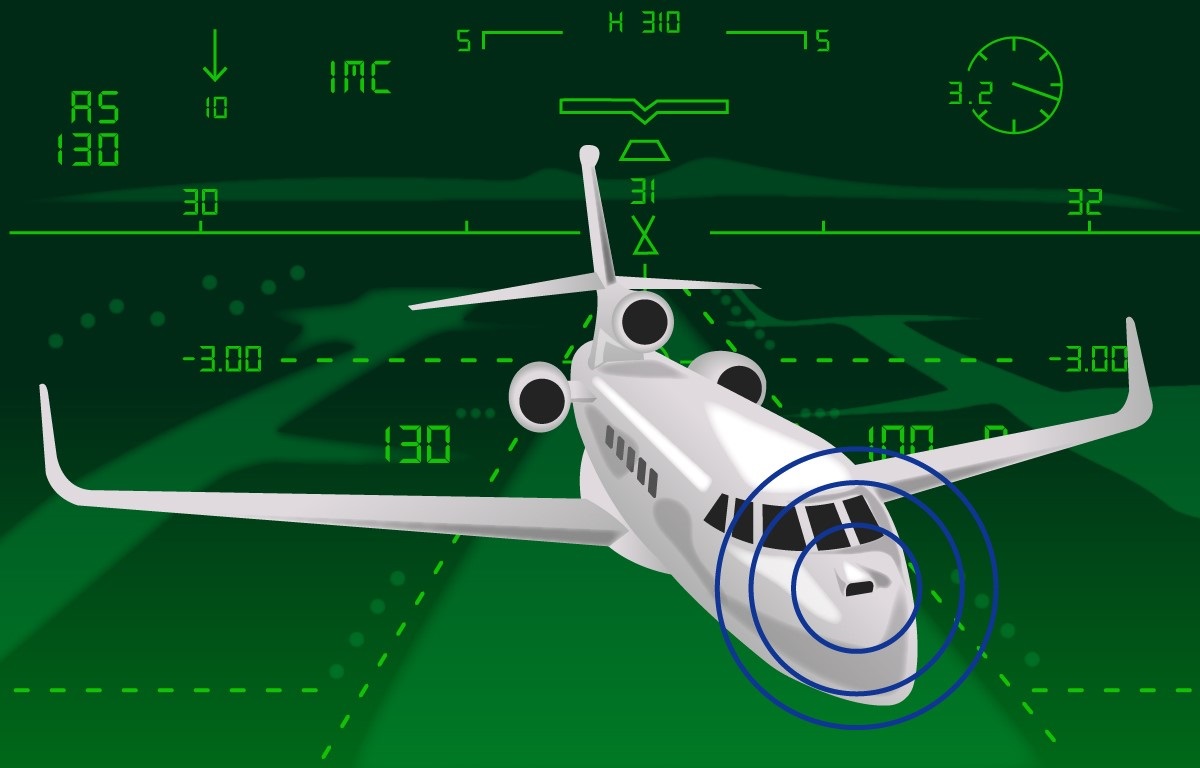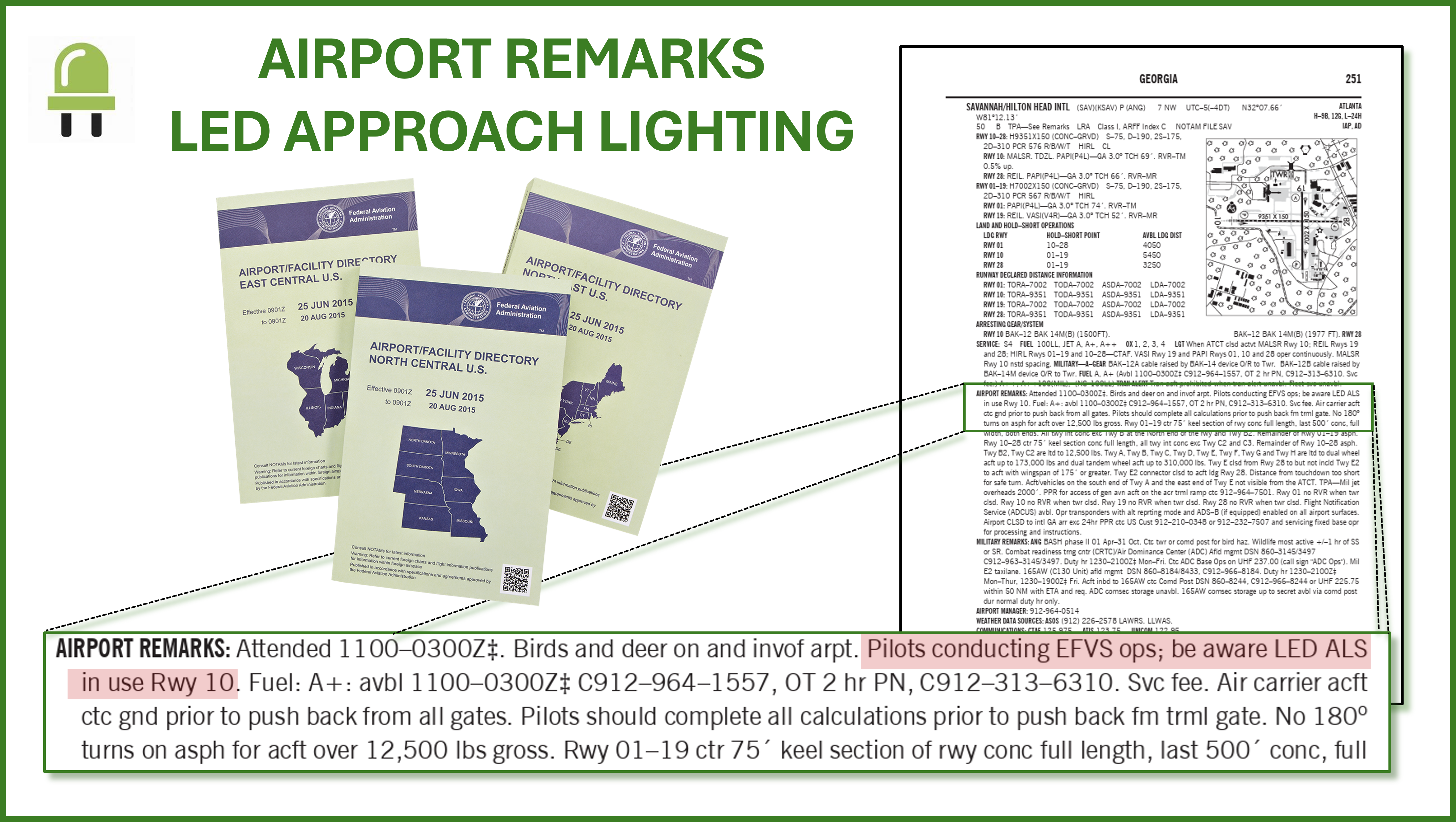Enhanced Flight Vision Systems (EFVS)
Monday, December 08, 2025
 | In our continuing effort to improve EFVS operational policy and the quality of service, the Flight Operations Group encourages EFVS stakeholders to provide feedback directly to our EFVS Operational Policy Team. Your feedback is greatly appreciated. |
| Please send us feedback on your EFVS operations here, or through your tablet. The data you provide helps us evaluate sensor performance and informs future operational credit policy. | |
EFVS User Feedback Summary. The information from the EFVS User Feedback web form is used to inform improvements to EFVS operational policy and increase awareness of EFVS sensor performance in the EFVS operator community. | |
 | Operators without a “radio altimeter tolerant airplane” are prohibited from conducting EFVS operations to touchdown and rollout under § 91.176(a) at airports in the 48 contiguous U.S. Operators should consult their aircraft OEM for information regarding their aircraft’s “radio altimeter tolerant” status. More information can be found in Airworthiness Directive 2023-10-02. |
| As the supply of incandescent lamps used in approach lighting systems dwindles, the FAA has begun using Light Emitting Diode (LED) lamps to keep the approach lighting up and running. This page includes information regarding the dissemination of information of LED installation locations. |

The following materials are available for your reference:
Regulations
Applicable FAA regulations for EFVS operations and pilot requirements.
| Number | Title |
|---|---|
| § 91.176 | Straight-in landing operations below DA/DH or MDA using an Enhanced Flight Vision System (EFVS) under IFR |
| § 61.66 | Enhanced Flight Vision System (EFVS) Pilot Requirements |
Advisory Circulars (AC)
Applicable FAA Advisory Circulars for EFVS operations and EFVS airworthiness approval.
| Number | Title |
|---|---|
| 90-106 | Enhanced Flight Vision Systems |
| 20-167 | Airworthiness Approval of Enhanced Vision System, Synthetic Vision System, Combined Vision System, and Enhanced Flight Vision System Equipment |
FAA Internal Guidance
Applicable inspector guidance material on the FAA Dynamic Regulatory System (DRS).
| Number | Title |
|---|---|
| Order 8900.1, Vol. 4, Ch. 17 § 1 | Evaluating an Application for Letter of Authorization C048 for Part 91 |
| Order 8900.1, Vol. 4, Ch. 17, § 2 | Evaluating an Application for Operations Specification C048 for Part 125 and 135 |
| Order 8900.1, Vol. 4, Ch. 17, § 3 | Evaluating an Application for Management Specification C048 for Part 91 Subpart K |
| Order 8900.1, Vol. 4, Ch. 17, § 4 | Evaluating an Application for Operations Specification C048 for Part 121 |
Application Guides
The application guides may not work properly if viewed or manipulated using a web browser (Chrome, Edge, etc.). Please use Adobe to view, complete, and save the appropriate application guide.
| Date | Title | Revision |
|---|---|---|
| 10/23/2024 |  Part 91 – Application Guide Part 91 – Application Guide | 8 |
| 10/03/2022 |  Part 91K – Application Guide Part 91K – Application Guide | 2 |
| 10/19/2022 |  Part 121 – Application Guide Part 121 – Application Guide | 3 |
| 10/03/2022 |  Part 129 – Application Guide Part 129 – Application Guide | 2 |
| 11/18/2024 | 6 |
Informational Documents
Information to clearly, and simply, explain certain EFVS topics. The informational documents may be viewed on either your web browser (Chrome, Edge, etc.) or you can use Adobe.
| Date | Title | Revision |
|---|---|---|
| 08/23/2022 | EFVS Overview | 5 |
| 05/20/2020 | EFVS Recent Flight Experience Requirements Explained for Part 91 Operators( PDF ) | 1 |
| 12/03/2025 | EFVS Pilot Training Reference( PDF ) | 1 |
| 04/21/2021 | EFVS Training Record Endorsements( PDF ) | 0 |
| 5/13/2025 | OSR - Operational Credit for Enhanced Flight Vision System (EFVS) | 7 |
| 5/15/2025 | Quick Reference Guide to EFVS Operational Credit | 2 |
| 10/03/2022 | EFVS User Feedback | 5 |
| 7/14/2025 | EFVS Operations and LED Approach Lighting | 0 |
EFVS Newsletters
Contact the Flight Operations Group’s EFVS focal point (listed below) for assistance with EFVS operational policy.
EFVS Focal Point: Scott McLellan
Email: 9-AVS-AFS-EFVS@faa.gov
